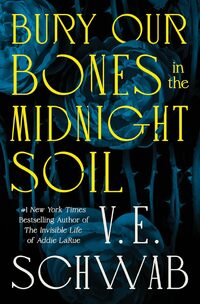How did you decide to write this particular story?
The unanswered question always brings me in! Eliza Warren’s memoir noting her
mother’s death, a space in the text, and then the very next sentence being “In
1854 I married Andrew Warren” intrigued me. What might have gone inside that
space that she didn’t want to talk about? Added to that question was hearing of
and later reading about her father’s crying through town, “My daughter is
dead!” following the marriage. What was that about? There had also never been
an exploration of Eliza the child as an interpreter during the Whitman tragedy.
I wanted to study that as well.
How did you decide to tell one woman’s story through diaries and letters and
the other as a first person?
I wanted the two stories to be distinct in the readers’ minds, and I didn’t
really want to rewrite all of the stories about the Spaldings as missionaries.
After all, there are many volumes of works written about them. I wanted to
consider what the mother might have experienced following the tragedy and her
own survival, and especially about her husband’s insistence that their daughter
attend the murder trial. Speculation also exists about Henry’s state of mind
after the tragedy, and I wanted to show his wife’s faithfulness but also some
of what may have been worries about his volatile behavior. I thought the diary
format could serve as a border to that story. I really wanted this to be more
of the daughter’s story, so I felt having her tell it and not be aware of her
mother’s perspective until later added interest. Plus, I think the daughter did
have a hard life, carried great wounds, and was both stoic and stumbling. I
hoped that the first-person format with a wider narrative could soften her and
help the reader see the scared ten-year-old child within some of the more
controlling actions of her later life.
As you noted, many people have chosen to write about this family. How did
you know where your story was going to go, and how is it different?
I don’t always know. I start writing before I think I should or I’d just keep
researching! There are no novels to my knowledge based on the daughter’s life,
and the mother is only a minor character in some fiction written about that
time period. So the daughter was the focal point for me. A novel allows us to
speculate about the why and about how one felt regarding an incident. Biography
or nonfiction allows us to explore what and when but must hesitate about
exploring people’s feelings. Novels are meant to move us, to bring emotion to
the surface, and to help us see our lives in new ways. To paraphrase French
writer Marcel Proust, “The real journey of discovery is not in seeking new
landscapes but in seeing with new eyes.” I wanted to show Eliza’s journey
toward seeing with new eyes.
You wrote about the bond between people who have survived a tragedy as Eliza
and Nancy Osborne did in this story. Have you experienced anything like that?
Several years ago my husband and I flew in our small plane with two friends,
Ken and Nancy Tedder. She was seven and a half months pregnant with their first
child at the time. We hit a clear-air wind shear and crashed, missing three
houses, power lines, and trees, and hitting the ground 450 feet from the end of
the runway. My husband and I had many broken bones while the Tedders
fortunately did not. Nancy went into labor, but it was stopped. We all dealt
with the trauma of the crash and what happened afterward. In this case, the
happy ending is that Nancy delivered a full-term baby six weeks later and still
has no memory of the accident. Guilt, worry, and wishing we had done something
different all visited my life. But since then, our lives have been forever
intertwined with the best of threads. They are as family, and one of the
greatest joys of my life was the morning Ken called to say Nancy had delivered
a healthy baby girl named Lisa. That call helped rewrite that story of
disaster. So yes, we survived a terrible accident, and the relationship with
that family will forever be richly distinct.
Jane Kirkpatrick is a best-selling, award-winning author whose previous
historical novels include All Together in One Place and Christy Award finalist
A Tendering in the Storm. An international keynote speaker, she has earned
regional and national recognition for her stories based on the lives of actual
people, including the prestigious Wrangler Award from the Western Heritage Hall
of Fame. Jane is a Wisconsin native who since 1974 has lived in Eastern Oregon,
where she and her husband, Jerry, ranch 160 rugged acres.
Website | Pinterest | Facebook |
Twitter | Blog
Based on true events, THE MEMORY WEAVER is New York
Times
bestselling author Jane Kirkpatrick's latest literary
journey into the
past, where threads of western landscapes, family, and
faith weave a
tapestry of hope inside every pioneering woman's heart.
Readers will
find themselves swept up in this emotional story of the
memories that
entangle us and the healing that awaits us when we
bravely unravel the
threads of the past.
Eliza Spalding Warren was just a child when she was taken
hostage by
the Cayuse Indians during a massacre in 1847. Now the
young mother of
two children, Eliza faces a different kind of
dislocation; her
impulsive husband wants them to make a new start in
another territory,
which will mean leaving her beloved home and her departed
mother's
grave--and returning to the land of her captivity. Eliza
longs to know
how her mother, an early missionary to the Nez Perce
Indians, dealt
with the challenges of life with a sometimes difficult
husband and
with her daughter's captivity.
When Eliza is finally given her mother's diary, she is
stunned to find
that her own memories are not necessarily the whole story
of what
happened. Can she lay the dark past to rest and move on?
Or will her
childhood memories always hold her hostage?
Read an
Excerpt
1 comment posted.


 © 2003-2025 off-the-edge.net
all rights reserved Privacy Policy
© 2003-2025 off-the-edge.net
all rights reserved Privacy Policy